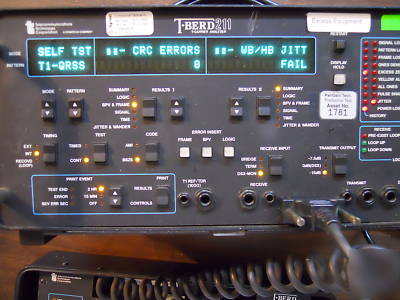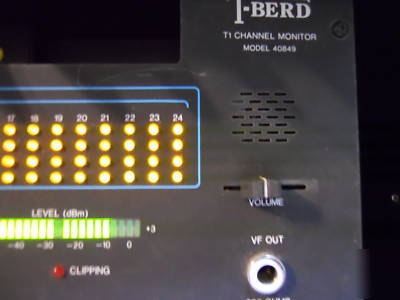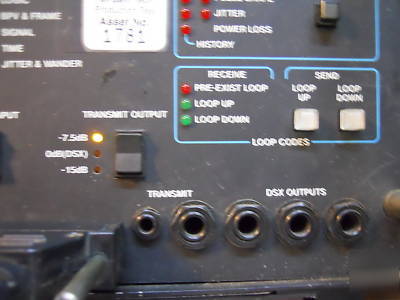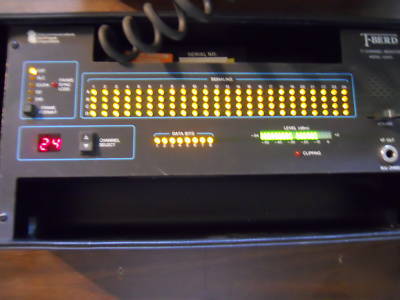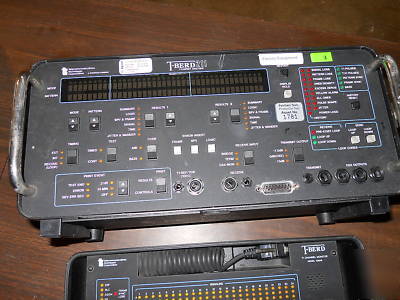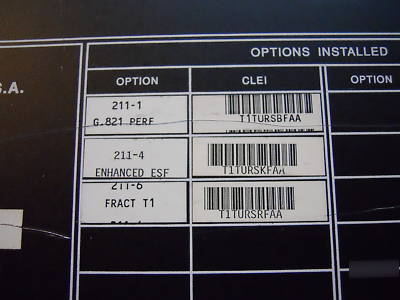____________________ > Abingdon
> System components
> Old Style
> Hydrolic Components
> High pressure Components
> Ttc acterna t-berd 211 t-carrier analyzer
Ttc acterna t-berd 211 t-carrier analyzer
TTC ACTERNA T-BERD 211 T-CARRIER ANALYZER
Pictures are of item listed. We used this t-berd to perform loopback testing on equipment installed in central telephone offices. No longer needed due to job change. Performed all test without flaws.
The T-BERD 209A/211 is a complete test and measurement solution for technicians who install, test, monitor,
and maintain T1 links and equipment. The T-BERD 209A/211 can be optioned to perform the following tasks:
Verify proper circuit operation from point to point
Ensure that loopback equipment responds to designated loopcodes
Test equipment under different traffic conditions using built-in fixed and pseudorandom test patterns
Circuit Maintenance and Problem Isolation
Monitor the circuit for intermittent problems that may become more serious over time
Avoid the expense of taking the circuit out of service
Analyze live traffic without introducing any disturbances on the line
Identify and locate cable pair faults including shorts, bridge taps, load coils, and other line impairments
Out-of-Service Troubleshooting
Stress and analyze the network with point-to-point and loopback testing
Quickly identify B8ZS encoded data via front
SMARTNIU mode queries the Performance
Monitor portion of combined NIU/Performance
Monitor equipment for the recorded T1 span
statistics, sets the Performance Monitor NIU
clock to match the T-BERD 209A/211 s, and
clears NIU performance results
during installation and maintenance
Perform bit error rate tests on selected channels
to verify contiguous and non-contiguous bandwidth
and route quality on FT1 circuits
Front panel indicator provides fast identification
of jitter problems; jitter measurements
across the full 10 Hz to 40 kHz range facilitate
isolation of multiplexer and channel bank clock
Determine if the output of a network element
adherence to pulse mask specifications at
Use DSX and network interface masks to measure
pulse shape and width, rise time, fall time,
Analyze signal strength to diagnose transmission
problems caused by high/low signal levels
Perform error analysis per G.821 specification
standards to verify circuit quality. Capture data
including unavailable seconds, percent availability,
degraded minutes, percent degraded
minutes, severely errored seconds, percent
Generate a full suite of patterns to rapidly locate
and isolate line problems. Patterns include:
Automated Multipattern Tests
Detect elusive bridge taps using automated
BRIDGTAP sequence and perform qualification
tests with the user-configurable MULTIPAT
Stress repeater ALBO circuits with 55 OCTET,
T1 DALY, and other long user test patterns
Identify circuits not configured for or incompatible
Intelligent Repeater Loopcodes
Loop up and loop down individual addressable
office repeaters and line repeaters, or transmit
Emulate and loop back network devices that
accept either in-band or ESF out-of-band (data
Decode ESF PRMs to confirm data link operation
and network performance; emulate ANSI
T1.403 compatible CSU equipment during circuit
installation and qualification
